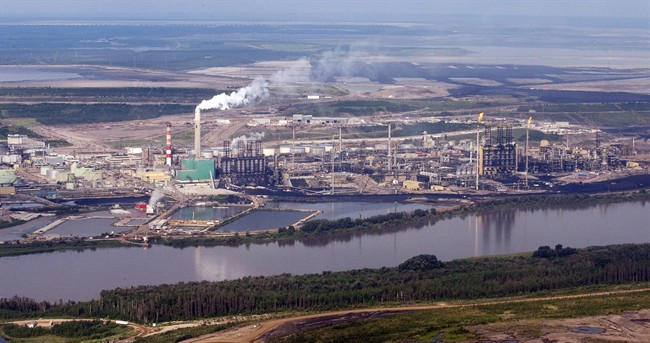EDMONTON – Albertans say they want the province to do much more to protect and conserve fresh water.

Some concerns outlined in a government report call for better management of the health of lakes and restricting the use of fresh water and chemicals in hydraulic fracturing.
People also told the province to more aggressively protect the headwaters of rivers, curb the use of fresh water by the oilsands and ensure that people, not industry, are the first priority when it comes to water.
There are also calls for more dams and reservoirs to store water, especially in the south, but such projects should not negatively affect First Nations and Metis.
The concerns are what the government heard at meetings and from surveys and messages from more than 2,000 people.
Alberta Environment has responded with a 20-point conservation action plan, but most measures won’t kick in until next year or beyond.
“Albertans want to ensure that water quality and quantities remain strong for the future,” Environment Minister Kyle Fawcett said Wednesday in a release.
The measures includes plans to reduce the amount of water that oilsands producers can use from the Athabasca River and to better manage oilsands tailings ponds. Details of these plans are expected to be released by next spring.
The government said it plans to bring in standards for baseline water-well testing near hydraulic fracturing, or fracking, operations in order to protect groundwater, especially in rural areas.
- 2021 heat dome fuelled by climate change, intensified wildfire risk: study
- B.C. introduces legislation recognizing Haida Gwaii Indigenous title
- Whale experts confident B.C. orca calf will survive, find family if rescue plan succeeds
- Plastic production cap still contentious as Ottawa set to host treaty talks
It also is developing a water conservation policy for fracking operations to minimize the energy industry’s use of fresh water. The guideline is to be rolled out next year by the Alberta Energy Regulator.
“Perhaps the strongest message received from participants was the need to reduce the use of fresh water by hydraulic fracturing operations and consider alternative water sources,” the report says.
Hydraulic fracturing involves pumping water, nitrogen, sand and chemicals at high pressure underground to fracture rock and allow natural gas or oil to flow through wells to the surface
The government is currently being sued by a woman who claims fracking near her land northeast of Calgary released hazardous amounts of chemicals such as methane into her well and that her concerns were not properly investigated.
Water use from the Athabasca River by the oilsands industry in northern Alberta has been closely watched by First Nations and environmental groups.
A draft government report last year estimated industrial water demand on the Athabasca is expected to increase by nearly 500 per cent by 2020.
The province said it will also work with communities to improve municipal water systems.
Jason Penner, an Alberta Environment spokesman, said as the province continues to grow, the demand for water will only increase, and obviously there is a limited supply.
“Water continues to be identified by people as the most precious, most treasured resource,” Penner said. “They are looking for more conservation, better, more responsible use of water by all sectors, including industry.”

Comments